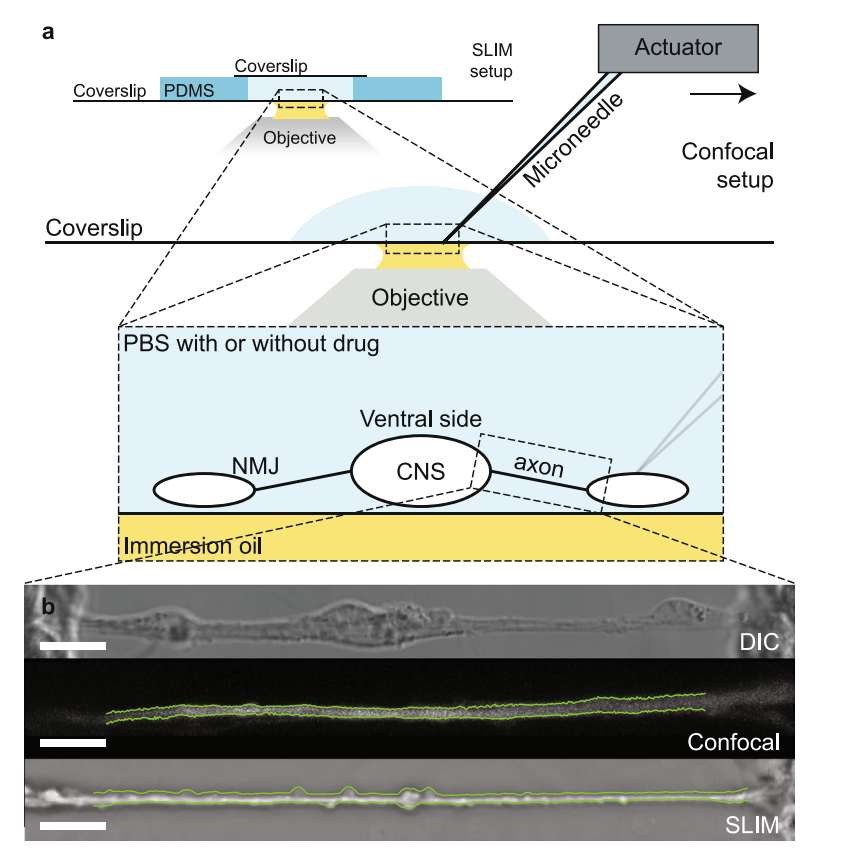COUPLED CIRCUMFERENTIAL AND AXIAL TENSION DRIVEN BY ACTIN AND MYOSIN INFLUENCES IN VIVO AXON DIAMETER
Anthony Fan1, Alireza Tofangchi 1, Mikhail Kandel 2, Gabriel Popescu2 & Taher Saif1
Scientific Reports, 7: 14188 2017
![]()

It has long been known that neuronal axons are contractile. They actively maintain rest tension along the longitudinal direction both in vitro and in vivo. Here we show evidence that embryonic drosophila axons also actively maintain contractility/tension along the circumferential direction. We used confocal microscopy and spatial light interference microscopy to monitor axonal diameter along their length. We observed a decrease in diameter when microtubules are disrupted and an increase in diameter when actin filaments or myosin II are disrupted. Interestingly, active diameter reduction occurred consistently when axons were subjected to manipulations known to increase axial tension, suggesting that tension can be coupled in the axial and circumferential direction. This is further supported by the remarkably similar time constants for diameter reduction and rest tension increase of slackened axons. We infer that the actomyosin-driven circumferential contraction/hoop tension applies a squeezing force on the microtubule bundle of the axons. This hoop tension is balanced by the restoring force of the microtubule bundle. Therefore, axonal diameter increased when actin/myosin disrupting drugs relaxed the hoop tension and decreased when microtubule disrupting drug relaxed the restoring force. Circumferential tension thus can regulate axonal diameter and volume, as well as potentially microtubules alignment, inter-tubular spacing, and, by extension, axonal transport.

